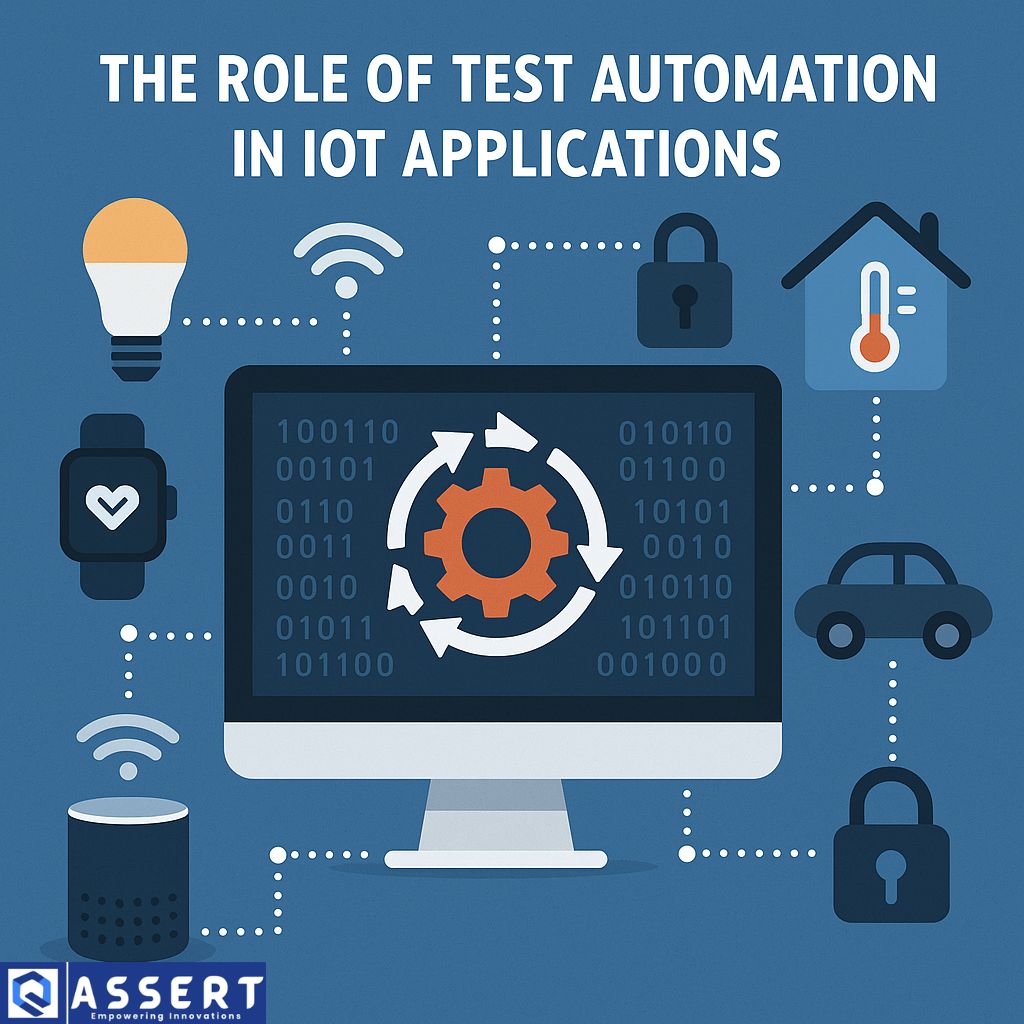The Internet of Things (IoT) connects many devices — like smart homes, wearables, and connected cars — to work together through data and sensors. But testing these devices can be very complex.
That’s where test automation in IoT applications becomes powerful. It helps QA teams test faster, improve accuracy, and handle the complexity of many connected devices.
1. Why Testing IoT Applications Is Important
IoT systems include hardware, software, and network connections. When these parts communicate, any small issue can cause big problems — such as device failure, data loss, or security risk.
For example:
-
A smart lock must respond correctly when a user sends a command from their phone.
-
A sensor must send accurate data to the cloud.
-
Devices must keep working even if the network is slow.
Because so many devices and systems work together, manual testing alone is not enough.
2. The Challenge of Testing IoT Applications
IoT testing is not just about one device or app — it’s about many things working together. Here are some common challenges:
-
Different hardware and OS versions
-
Many types of networks (Wi-Fi, Bluetooth, 4G, 5G)
-
Real-time data communication
-
Compatibility between devices
-
Security and privacy concerns
These challenges make automated testing a better choice for speed and consistency.
3. The Power of Test Automation in IoT
Test automation helps handle the complexity of IoT testing by simulating different devices, environments, and data conditions. It helps testers:
-
Run tests on multiple devices at the same time
-
Detect issues faster
-
Improve product quality
-
Reduce manual work
With automation, teams can run more tests in less time and make sure the system behaves correctly across many devices.
4. Types of Testing in IoT Automation
IoT automation includes several kinds of testing:
a. Connectivity Testing
To check if devices communicate properly through Bluetooth, Wi-Fi, or cellular networks.
Example: Testing if a smart bulb responds when a user changes settings in the app.
b. Performance Testing
Automation tools can simulate multiple devices to check system speed, data response, and performance under heavy load.
c. Security Testing
IoT devices often deal with sensitive data. Automated testing ensures data is encrypted and protected.
d. Compatibility Testing
Ensures devices and software work across different platforms and environments.
e. API Testing
Since IoT systems often use APIs for communication, automation tools like RestAssured or Postman can help validate data exchange.
5. Popular Tools for IoT Test Automation
Here are some useful tools for automating IoT tests:
-
Appium: For testing mobile apps that connect with IoT devices.
🔗 https://appium.io -
Selenium or Playwright: For web interfaces connected to IoT systems.
🔗 https://playwright.dev -
Postman or RestAssured: For API and backend testing.
🔗 https://rest-assured.io -
JMeter: For performance testing of multiple devices.
🔗 https://jmeter.apache.org -
IoT-specific cloud platforms like Azure IoT Hub or AWS IoT Testing can simulate and monitor device behavior.
🔗 https://azure.microsoft.com
6. Benefits of Using Test Automation in IoT
-
Faster testing: Automation runs tests 24/7.
-
Better coverage: Many devices and conditions can be tested at once.
-
Higher accuracy: Reduces human error.
-
Scalability: Easily expand testing as more devices are added.
-
Improved quality: Ensures reliability across networks and hardware.
7. Best Practices for IoT Test Automation
-
Start small — Begin with simple device functions before scaling up.
-
Use cloud-based testing — For flexibility and scalability.
-
Combine hardware and software testing — Don’t forget the physical parts!
-
Monitor real-world usage — Collect data from real devices to improve automation.
-
Integrate with CI/CD — Use tools like Jenkins or GitHub Actions to run tests automatically after each code change.
8. The Future of IoT and Automation
As IoT continues to grow, automation will become even more essential. With AI-powered test automation, tools can now identify issues, predict failures, and even create smart test cases automatically.
This means faster delivery, fewer bugs, and safer IoT systems.
Conclusion
Test automation in IoT applications is not just about saving time — it’s about ensuring that every connected device works safely and reliably.
As IoT continues to expand, automation will keep playing a big role in making sure everything stays connected, secure, and functional.




